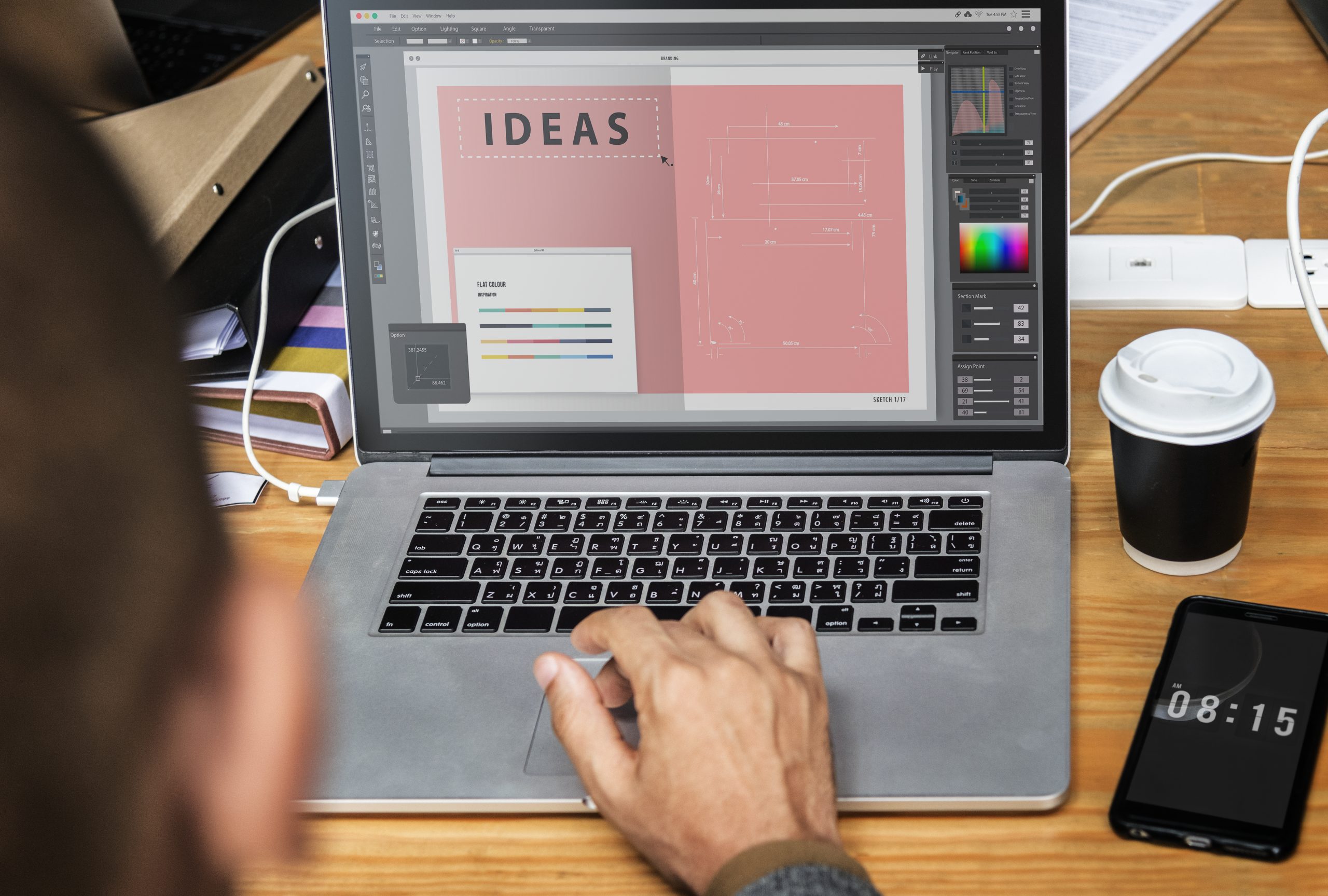Wondering if Photoshop is a viable tool for your design projects? Explore the capabilities of this software and its potential to elevate your creative endeavors. Uncover how Photoshop can revolutionize your design process and enable you to achieve professional-quality results. Discover the secrets that make Photoshop a go-to choice for designers across various industries. Stay tuned to unravel the hidden gems of utilizing Photoshop for your design ventures and witness the transformative power it holds in shaping your artistic vision.
Importance of Learning Photoshop
Learning Photoshop is an essential step towards mastering the creative and technical skills required for a successful career in graphic design. Developing Photoshop skills is crucial as it forms the foundation of your design proficiency. It enables you to explore creative applications, enhancing your ability to communicate visually. Understanding Photoshop goes beyond software knowledge; it equips you with graphic design essentials necessary for effective visual communication. By honing your Photoshop skills, you gain the capability to bring your creative ideas to life and produce visually compelling designs that resonate with your audience.
Acquiring proficiency in Photoshop not only opens doors to a myriad of design opportunities but also allows you to express your creativity in ways that captivate viewers. With Photoshop, you can delve into the realm of visual storytelling, where every brushstroke and layer contributes to the narrative of your design. Embrace Photoshop as your creative ally, empowering you to craft engaging visuals that speak volumes in the language of design.
Creative Aspects of Photoshop
Unlock your imagination with Photoshop’s creative tools for designing visually captivating graphics and artwork. Dive into a world of endless possibilities where you can bring your ideas to life with just a few clicks. Let your creativity shine through as you explore the following aspects of Photoshop:
- Applying effects: Transform your images with a variety of effects to add depth and interest.
- Image manipulation: Blend, distort, and enhance your images to create unique visuals.
- Text design: Play with fonts, sizes, and styles to convey your message effectively.
- Visual storytelling: Use Photoshop to craft narratives through visuals that captivate and engage.
- Creative compositions: Experiment with layouts, colors, and elements to design compositions that stand out.
With Photoshop’s versatile tools and features, you have the power to unleash your creativity and produce stunning designs that tell your story in a visually compelling way.
Best Version of Photoshop
Discover the optimal choice for graphic design work with the primary version of Photoshop known as Photoshop CC. When it comes to graphic manipulation, design software, and image editing for your creative projects and visual communication needs, Photoshop CC stands out as the best tool in the Adobe suite. This version offers unparalleled capabilities for creating stunning designs, enhancing images, and manipulating graphics with precision. Whether you are working on digital illustrations, web graphics, or print materials, Photoshop CC provides a comprehensive set of features tailored to meet the demands of professional designers. Its advanced tools and intuitive interface make it the preferred choice for graphic designers who seek to elevate their work to new heights. With Photoshop CC, you can unleash your creativity and bring your design ideas to life with unparalleled flexibility and control.
Learning Options for Photoshop
Embark on your journey to mastering Photoshop for graphic design with a range of introductory classes and resources tailored for beginners. Whether you prefer self-paced learning or structured training courses, there are various options available to enhance your skills. Dive into online resources that offer tutorials and guides to kickstart your Photoshop journey. Take advantage of self-paced learning to develop your skills at your own speed, allowing for a more personalized learning experience. Consider enrolling in formal training courses that provide comprehensive instruction and guidance for skill development in Photoshop. Dedicate time to practice sessions to apply what you’ve learned and refine your techniques effectively.
- Online resources
- Self-paced learning
- Training courses
- Skill development
- Practice sessions
Author’s Expertise in Graphic Design
Transitioning from exploring learning options for Photoshop, let’s now delve into the author’s extensive expertise in graphic design. With over 15 years of experience in user experience design, the author has worked on a wide array of projects, including websites, ecommerce sites, apps, and embedded systems. Not only does the author deliver UX training and consulting services for various companies, but they also possess extensive knowledge of modern UX design and prototyping tools. Additionally, the author has authored more than 20 books on design tools and processes, showcasing a deep understanding of the industry.
| Author’s Expertise | Details |
|---|---|
| Author’s Experience | Over 15 years in UX design |
| Design Expertise | Worked on diverse projects |
| UX Training | Provides training services |
| Modern Tools | Proficient in latest UX tools |
| Extensive Knowledge | Authored over 20 design books |
This wealth of experience and knowledge equips the author with the skills necessary to tackle graphic design challenges effectively, utilizing modern tools and techniques to deliver visually appealing and user-friendly designs.
Graphic Design Overview
Let’s delve into the world of graphic design and understand its fundamental principles and applications. Graphic design involves visual communication and problem-solving. It utilizes typography, photography, and iconography, considered a subset of visual communication and communication design. Graphic designers create visual representations using symbols, images, and text. Typography, color, and layout are key elements in graphic design. Here’s a quick overview to evoke your interest:
- Typography Techniques: Learn how to play with fonts and styles to convey different moods and messages effectively.
- Color Psychology: Discover the impact of colors on emotions and how to choose the right palette for your designs.
- Visual Aesthetics: Explore the principles of visual appeal to create designs that captivate your audience.
- Design Principles: Understand the basic rules that guide successful graphic design projects.
- Layout Concepts: Master the art of arranging elements on a page for optimal visual impact and user experience.
Tools for Graphic Design
To excel in graphic design, understanding the diverse array of tools available is essential for unleashing your creative potential. Graphic software like Photoshop is widely used but not the only available program. Design tools such as Illustrator, InDesign, and CorelDRAW also play significant roles in the industry. Each program has unique strengths and weaknesses, catering to different aspects of design work. When delving into digital art and visual communication, these tools become essential for expressing ideas effectively. Image editing is a crucial part of graphic design, requiring proficiency in various software to manipulate visuals for different projects. Whether you’re working on digital illustrations, layouts for print materials, or enhancing photographs, having a strong grasp of these design tools is fundamental for creating compelling and visually engaging content. Explore the possibilities each software offers to elevate your design skills and communicate your message effectively.
Photoshop for Graphic Design
Explore the creative possibilities of using Photoshop for graphic design and unleash your design potential with its versatile features.
- Design techniques: Experiment with various design methods to create unique visuals.
- Visual creativity: Let your imagination run wild and express your artistic vision.
- Digital artistry: Dive into the world of digital art and bring your ideas to life.
- Image manipulation: Transform images to suit your design needs and convey messages effectively.
- Graphic composition: Master the art of arranging visual elements to craft compelling designs that captivate your audience.
Photoshop offers a platform where you can blend design techniques, enhance visual creativity, delve into digital artistry, master image manipulation, and refine graphic composition. With these tools at your disposal, you can elevate your graphic design projects to new heights, creating visually stunning and impactful pieces that resonate with viewers.




